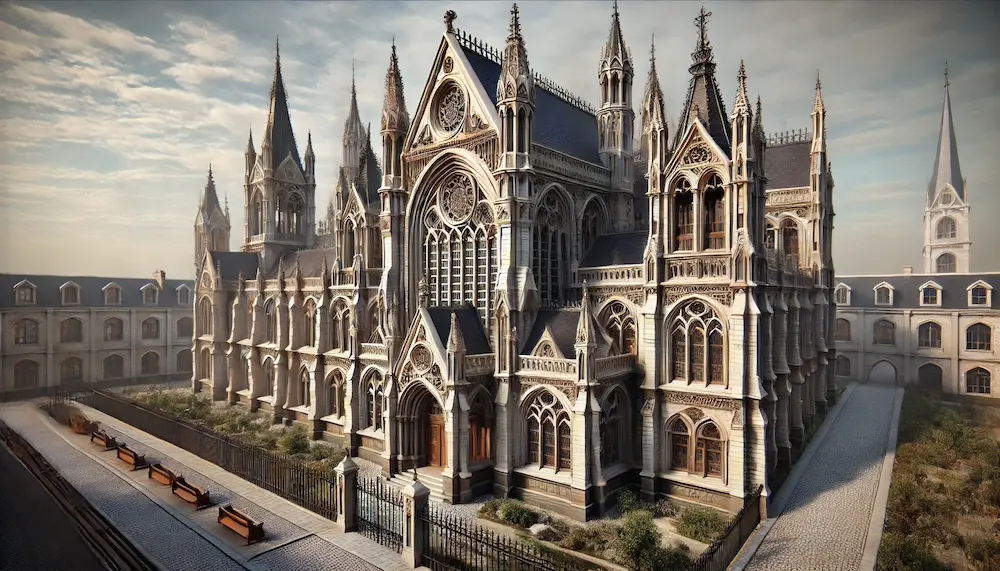Gothic Revival architecture, characterized by its pointed arches, steeply pitched roofs, and intricate detailing, has been employed in the design of various educational institutions, including elementary schools.
Introduction to Gothic Revival Elementary School Architecture
Emerging in the mid-19th century, Gothic Revival architecture drew inspiration from medieval Gothic structures, emphasizing verticality and ornate detailing. In educational settings, this style was often chosen to convey a sense of tradition, stability, and academic rigor.
History and Origins of Gothic Revival Elementary School Architecture
The Gothic Revival style gained prominence in the United States between 1830 and 1860, influenced by architects such as Alexander Jackson Davis and Andrew Jackson Downing. Their works and publications promoted Gothic Revival as an appropriate design for rural settings, including schools, due to its picturesque and romantic qualities.
Key Features of Gothic Revival Elementary School Architecture
- Pointed Arches: Utilized in windows, doorways, and decorative elements, these arches are a hallmark of the Gothic Revival style.
- Steeply Pitched Roofs: These roofs contribute to the vertical emphasis typical of Gothic Revival structures.
- Decorative Tracery: Intricate wooden or stone trim, often referred to as “gingerbread,” adorns gables and eaves.
- Front-Facing Gables: Prominent gables with decorative vergeboards enhance the building’s façade.
- Towers or Turrets: Some high-style examples feature castle-like towers with parapets, adding to the medieval aesthetic.
Applications of Gothic Revival Design in Elementary Schools
While Gothic Revival was more commonly applied to churches and large institutional buildings, several elementary schools adopted this architectural style:
- Peterboro Street Elementary School: Located in Canastota, New York, and built in 1927, this school exemplifies the Gothic Revival style with its broad, projecting central pavilion and decorative brickwork.
- Bunbury Aldersey School: Situated in Bunbury, Cheshire, England, this school was constructed in 1874 and designed by architect John Douglas. It features characteristic Gothic Revival elements, including an octagonal turret and pointed arches.
Considerations When Choosing Gothic Revival Design for Elementary Schools
- Aesthetic Appeal: The ornate detailing and historic connotations of Gothic Revival architecture can create an inspiring educational environment.
- Construction Costs: The intricate designs and specialized materials may lead to higher construction and maintenance expenses.
- Functional Layout: Ensuring that the interior spaces meet modern educational requirements is essential, as the original designs may not align with contemporary needs.
- Historical Preservation: Existing Gothic Revival school buildings may be subject to preservation guidelines, affecting renovation and expansion plans.
Conclusion
Gothic Revival architecture has left a lasting impact on the design of educational institutions, including elementary schools. Its distinctive features contribute to a sense of history and grandeur, offering unique and inspiring learning environments.
